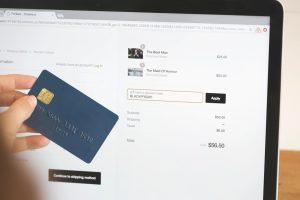
One of the biggest differences between an online shop and a brick-and-mortar one is the checkout and e-commerce sales strategies and e-commerce growth process involved.
Marketplaces have been around for a while. Starting with the one near cities and towns, you will always find very interesting “small shops” where you can find absolutely anything. It seems obvious that bigger markets draw more customer visits than compact, single-source websites.
Checkout is the most important step for marketplaces and every other online channel. Should you have your own Marketplace just like Alibaba, Shopee, Rakuten, Etsy, Upwork, RapNet, Mercado Libre, Marktplaats, Taobao, Pinduoduo, Wayfair, eBay, or Amazon?
Two main characteristics define an online marketplace:
- The same website is used by a large number of buyers and vendors.
- Customers may buy things without leaving the app or website.
According to Statista, around 5.2 trillion dollars worldwide were spent on retail online shopping e-commerce in 2021. It is anticipated that this amount will increase over the coming years by 56%, reaching 8.1 trillion dollars e-commerce growth by 2026, making up over 24.6% of all consumer spending worldwide.
Marketplace models may be used for both B2C and B2B. Based on this Think with Google’s remark, if the e-commerce sales checkout experience is not tailor-made to meet the buyer’s expectations, the final transaction will never happen. In order to provide your customers with the most significant possible payment and shipping choices, you must streamline your checkout process as a good online shopping experience.
Here are some tips on how to optimize your checkout process and leverage marketplaces for maximum results:
Streamline the checkout process:
The checkout process is the most critical aspect of any e-commerce website. Ensure that the process is quick and easy, with as few steps as possible and by displaying a check-out progress bar. Consider offering guest checkout options, saving customer information for future purchases, and clearly displaying shipping and tax information. 27% of people who would have abandoned their online cart otherwise are persuaded to complete their purchase by a quick checkout process.
Offer multiple payment options:
According to Shopify, multiple payment options are always worth pondering as a key tactic. If customers are unable to use their preferred method of payment on the website, about 7% of them will abandon the checkout process. Offer as many payment options as possible to accommodate the needs and preferences of your customers. This can include credit/debit cards, PayPal, Apple Pay, Google Pay, and others.

With the growing number of people shopping on their mobile devices, it’s essential to ensure that your checkout process is optimized for mobile. This includes having a responsive design and clear, easy-to-use buttons.
A practical example, the majority of shoppers use coupons, with email being the most popular source for finding them. The statistics also highlight that most people are attracted to discounts of 20% or more, however, according to Shopify, customers might abandon the purchase process once they see a discount code field.
Consider hiding the discount code field behind a dropdown to prevent potential customers from exiting the checkout flow to find a coupon. This makes it available for those with a promo code while not being off-putting to others purchasing without one.
Maximize Social Media Reach:
In the contemporary digital landscape, a multitude of social media platforms offer seamless e-commerce integration, with features such as in-app purchasing, shoppable posts, and prominent “Buy Now” buttons leading customers directly to a brand’s product page. This allows users to effortlessly share products they are interested in with their network, thus increasing the chances of them making a purchase.
Social media platforms such as Facebook, Instagram, and Twitter have emerged as powerful influencers in the e-commerce world, providing customers with the opportunity to discover and make purchases based on recommendations from trusted sources like friends, peers, and even popular influencers.
Utilize marketplaces:
Marketplaces like Amazon, eBay, and Etsy can provide significant exposure for your products and help drive sales. Make sure to fully utilize the features and tools provided by these platforms to optimize your product listings and increase visibility.
Provide clear shipping information:
Be transparent about shipping times, costs, and policies. This will help reduce the number of abandoned carts and increase customer satisfaction. Also, the smooth process of just entering their billing and shipping addresses into the system is important. The longer a person is in the checkout line, the longer they have to change their mind.
Use Google Autocomplete to expedite the process. It saves customers time by 20% and minimizes mobile errors by prefilling their billing and shipping addresses as they type them in.
Make use of customer reviews:
Encourage customers to leave reviews on your website and on marketplaces. This can help build trust and credibility, leading to increased sales. The use of trust signals has been growing exponentially, due to their efficacy in boosting trust.
Invest in customer service:
Provide excellent customer service, responding to inquiries and resolving issues promptly. This can help build customer loyalty and increase the likelihood of repeat purchases.
By getting in touch with us and scheduling a free-of-charge consultation, we will help you optimize your digital marketing strategies, and e-commerce sales for long-term success and the best conversion rate optimization. We’ll also demonstrate the advantages of incorporating your own Marketplace into your e-commerce plan and assist you in streamlining the checkout process.


